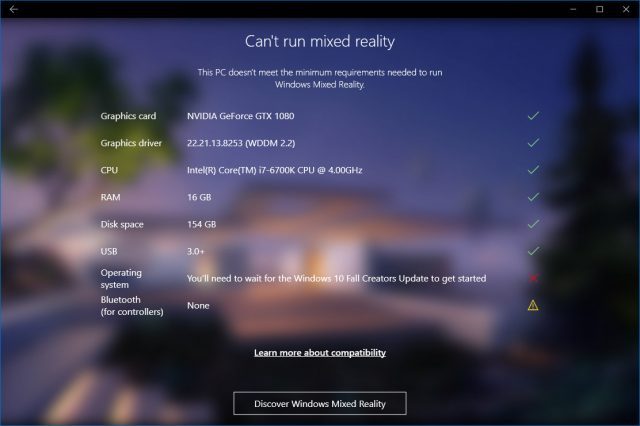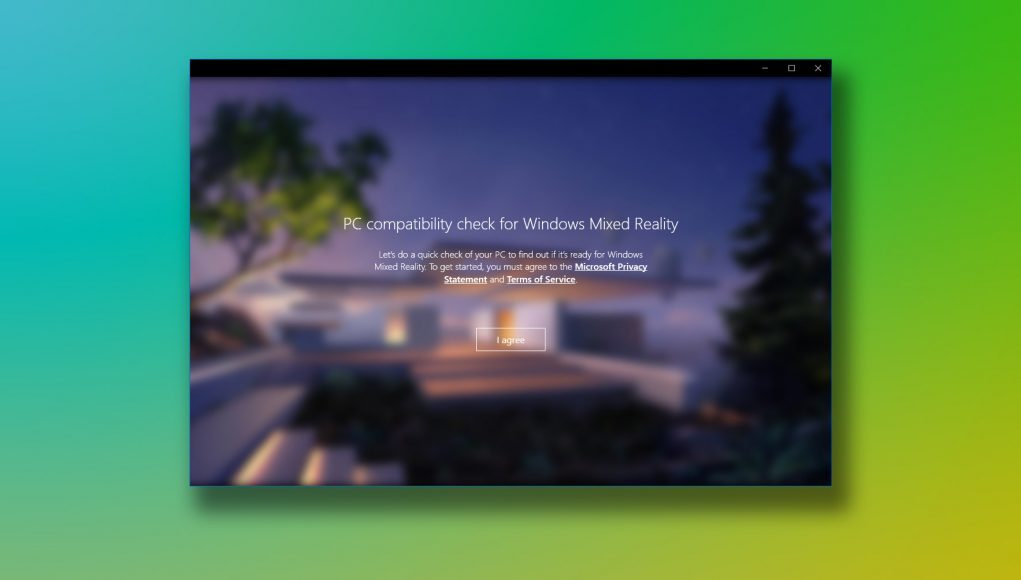As the holiday launch of the Windows VR headsets nears, Microsoft has published a new set of system requirements and an app allowing you to see if your PC will be ready for the company’s “Mixed Reality” platform.
A while back, a pre-release version of Windows specified some impressively low minimum specifications for Microsoft’s “Mixed Reality” platform (at the time called “Windows Holographic”). Though the company is indeed targeting support for a broad range of relatively low-end computers (even those with integrated graphics) a newly published minimum spec raises the bar a bit, and also clarifies the requirements for ‘Mixed Reality Ultra’ PCs, which will run Windows VR headsets at refresh rates and with better graphics. Here’s a look at Microsoft’s latest Mixed Reality specifications (which they note are subject to change):
| Desktop and Notebook PCs with Discrete Graphics (‘Mixed Reality Ultra’) | Desktop and Notebook PCs with Integrated Graphics (‘Mixed Reality’) | |
| Operating System | Windows 10 (RS3) Fall Creators Update – Home, Pro, Business, Education | |
| Processor | i5 Intel Core i5 (4th generation) CPU with 4 or more physical cores AMD FX-4350 4.2Ghz (desktop), 4 or more physical cores | Intel Core i5 (7th generation) CPU, 2 physical cores with Intel® Hyper-Threading Technology enabled |
| RAM | 8GB DDR3 | 8GB DDR3 Dual Channel |
| Hard Disk Space | 10 GB of free space | |
| Graphics Card | NVidia GTX 965M/AMD RX 460 or greater DX12 capable discrete GPU | Integrated Intel® HD Graphics 620 or greater DX12 capable integrated GPU |
| Graphics Driver | Windows Display Driver Model (WDDM) 2.2 | |
| Display | Connected external or integrated VGA (800×600) display | |
| Graphics Display Port | 1 x available HDMI 1.4/ DisplayPort 1.2 | |
| USB Connectivity | 1 x available USB 3.0 Type-A or Type-C | |
| Bluetooth (for accessories) | Bluetooth 4.0 | |
The new consumer Windows Mixed Reality spec is published here, and comes with a bunch of fine print.
For developers building for the Windows Mixed Reality platform, Microsoft recommends a higher set of specifications.
Check to See If Your PC is Ready for Windows Mixed Reality
If you want to know whether or not your computer makes the grade, Microsoft has handily published a new application which will tell you just that. The ‘Windows Mixed Reality PC Check’ app is available on the Windows store, and will check your hardware against the Mixed Reality specifications.
Update (9/14/17): The Windows Mixed Reality PC Check app has reappeared on the Windows store.
Update (8/28/17): Microsoft seems to have pulled the Windows Mixed Reality PC Check app from the Windows store for now. It will likely return closer to the launch of the Windows VR headsets.

Even if your computer meets the specs, the app is likely to trigger a ‘Can’t run mixed reality’ message because the platform relies on the upcoming Windows 10 Fall Creators Update which hasn’t yet been released.







